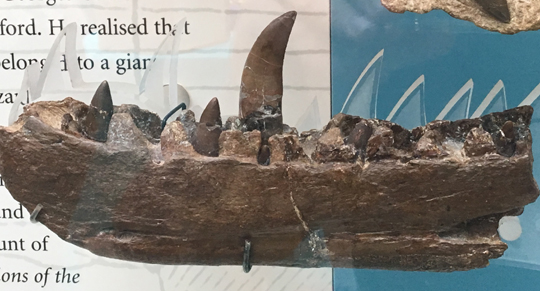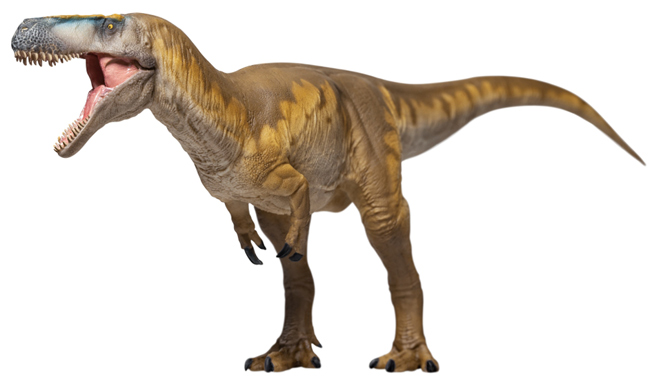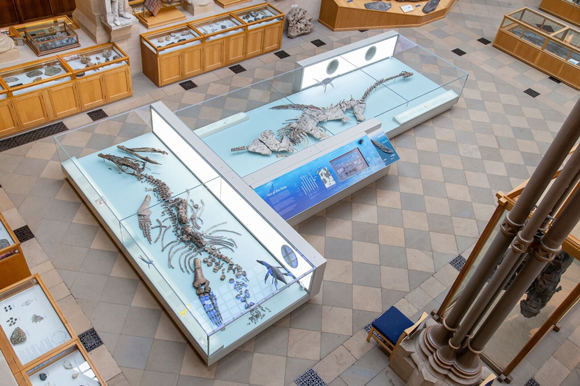Megalosaurus bucklandii the First Dinosaur to be Scientifically Described
Buckland’s Great Lizard
Whilst visiting the Oxford Museum of Natural History, we took the opportunity to take lots of photographs of the dinosaur exhibits. Naturally, our attention was drawn to that part of the museum that featured Megalosaurus (M. bucklandii).
The Iconic Right Dentary (Lower Jaw) of Megalosaurus bucklandii

Picture credit: Everything Dinosaur
Megalosaurus bucklandii
The photograph (above), shows the left side of the right dentary. Megalosaurus (M. bucklandii) was the first member of the Dinosauria to be officially, scientifically described. The name was first coined by the English surgeon James Parkinson in 1822 and Buckland published his description in 1824. The jaw fossil was included in the original description by William Buckland, it has the classification number OUMNH J13505.
A Model of Megalosaurus (PNSO)

The picture (above) shows a Megalosaurus bucklandii figure from the PNSO model series.
To view this range: PNSO Age of Dinosaurs Models.
The right dentary is the designated lectotype, Buckland did not establish any holotype for M. bucklandii, instead he used several fossils, including the dentary to constitute the type fossil material for this species. These fossils consisted of rib bones, bones from the hind limbs, vertebrae and elements from the pelvic girdle, together these fossils (the syntypes), describe the taxon.
Visit the website of Everything Dinosaur: Everything Dinosaur.


